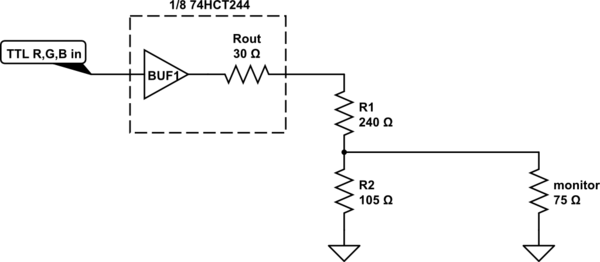I'm designing a TTL to VGA DAC for a vintage PC, and I'm confused about the significance of the output and input impedances of my video card and monitor, respectively. The VGA spec states 75 ohms at both ends, if I understand it correctly. I couldn't find mention of an output impedance for the TTL video cards (I have an IBM CGA card and an IBM MDA card). My first inclination is to treat both the card and the monitor as 75 ohm equivalent resistors, and design accordingly. Specifically, my diagram would look like this:

simulate this circuit – Schematic created using CircuitLab
But on further consideration, it occurs to me that the video card is TTL, so there should be 5V on the signal lines, and I can just ignore its output impedance and treat it like a straight 0V/5V signal source. In that case, my diagram would be the same, except it would omit R1.
The contents of the solid box is just a resistor network, to combine the digital rgbi lines into an analog signal and drop the voltage down from 5V to .7V max, as per the VGA spec. No active components, transistors, diodes or other fancy stuff.
Am I thinking about this correctly, or am I going to set fire to something?

